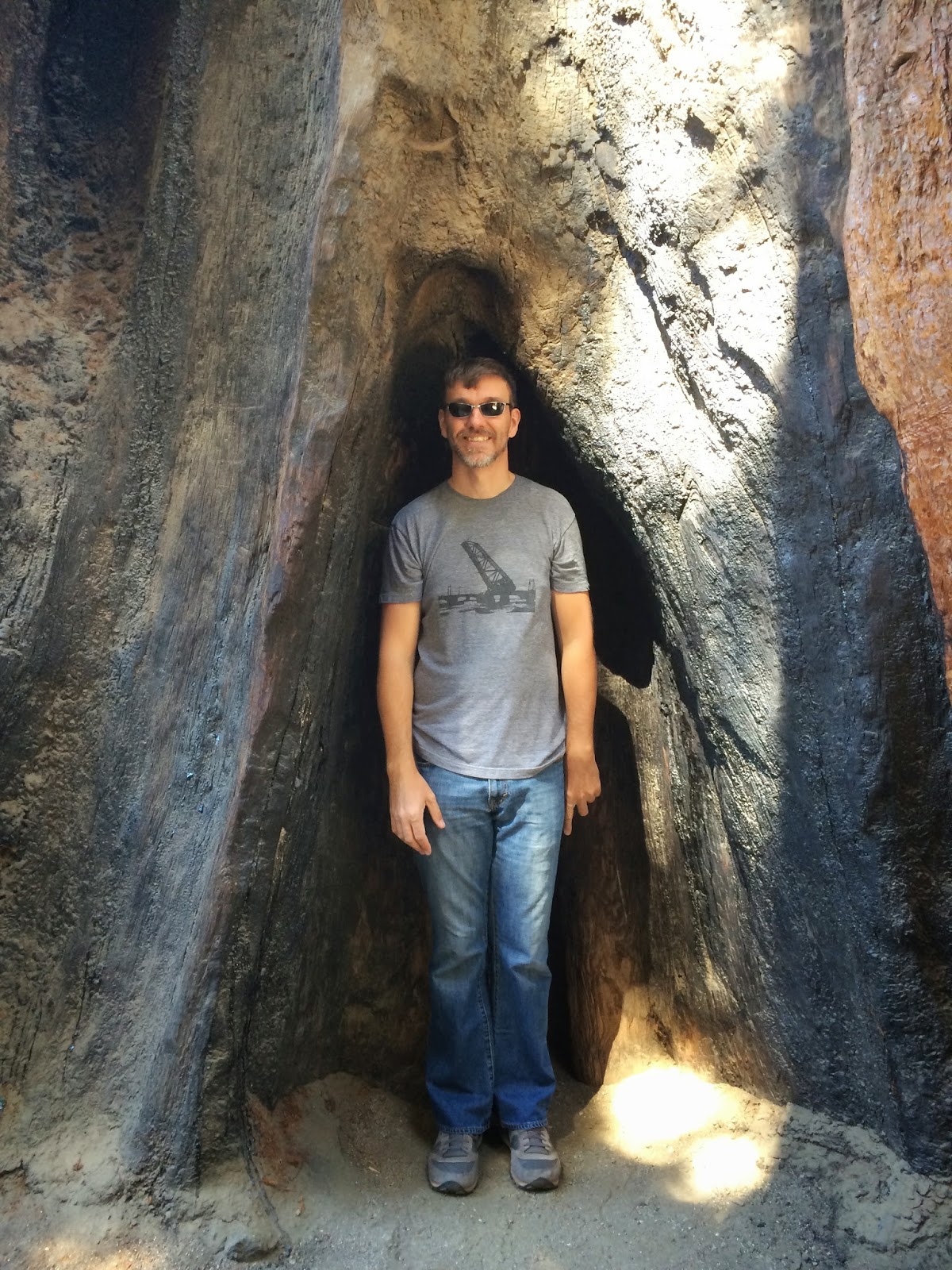We arrived late at the Lodgepole Campground in the Giant Sequoia National Park in the total darkness, so it is always interesting to see the actual campground surroundings in daylight.
As we set off through the park, we encountered traffic. Fortunately we only had to sit in this for about ten minutes.
Unfortunately, I made the mistake of missing the turn-off for parking for the General Sherman Tree, so I had to swing back around and head back up the road. It was about a quarter mile hike down to the tree itself, and just walking there in the beautiful tall trees, calm blue sky and cool mountain air was breathtaking.
The Sequoias, Sequoiadendron giganteum are one of remaining members of the one of three species of coniferous trees known as redwoods.
The centerpiece of this park is the General Sherman Tree, the largest tree (by volume) in the world.
From Wikipedia:
In 1879, the General Sherman was named after American Civil War general, William Tecumseh Sherman, by naturalist James Wolverton who had served as a lieutenant in the 9th Indiana Cavalry under Sherman.
The tree is just staggeringly huge, impressively quiet in the grove of trees.
The other trees in the grove were also impressively huge, but compared to the General, they just didn't seem that big.
Fire apparently doesn't do much damage to the sequoias, in fact it can be quite helpful in thinning out the vegetation and other trees that might divert needed resources.
On the way back up to the parking lot, we stumbled across several brown bears. They didn't really seem to care one bit about the humans milling about, so it was neat to watch them the mother and her two cubs. you can just make them out in the picture near the downed log.
Driving out of the park was just as amazing, even if we did have to sit in the same traffic jam that we had previously. We managed to have a nice lunch in the car during our twenty-five minute wait.
I was sad to leave the sequoias, but I know I'll go back someday, hopefully soon.
The twisty roads were fun for the first few miles, but eventually, it was just tiresome. I wanted to make time and it was hard to do safely.
Finally out of the steep twisty hills, we came across this veritable oasis in the middle of the brown drought. Lake Kaweah was created in 1962 by the US Army Corp of Engineers, and contains much of the runoff from the surrounding mountains in the spring, and also produces electricity from ahydroeletric plant.
By this time, both Steph and I needed sone internet time, and a break from nature. We headed into the city Visalia, CA to a neat little coffee shop named char-cu-te-rie. The bacon-popcorn was amazing, as was the staff, ice cream and of course wi-fi. We closed the place down!
Visalia is an interesting little town, and while we didn't spend much time there, on the main street I saw this theater. The Fox has an interesting history dating back to the 1930's, and is a centerpiece of the city.
On our way south from Visalia, the temperature hit 100 degrees. Thank goodness for air conditioning.
Orchards abound in this part of California.
We were low on provisions for the next two nights, so we poked around Porterville, CA looking for a grocery store. We found this crazy-awesome store that was filled with spanish influenced foods. We got meat for two nights meals, along with other important staples (re: wine).
Moving along from the orchards north of Porterville, we turned east again and once again the landscape changed into parched, gently rolling ranch land.
More twists, up into the southern end of the Sierra Nevada mountains again, this time heading towards Lake Isabella to camp for the night.
We were originally going to camp in a place called Hungry Gulch Campground, but after running into town to get some firewood, we ended up spending the night Pioneer Point Campground. It was a beautiful, quiet night with a few other people in the campground. A clear, starry night without much of a breeze made for a good nights sleep.






















